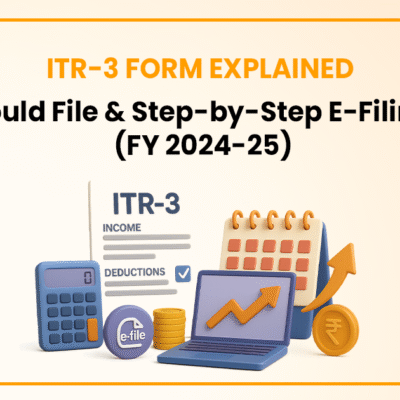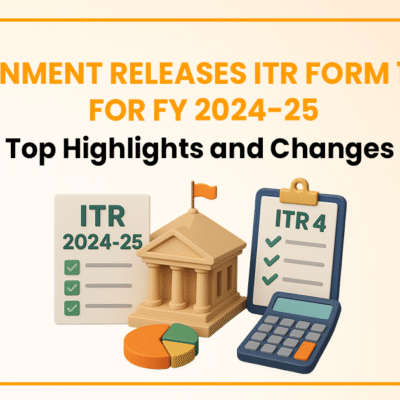Brief of Section 196, 197 & Schedule-V of Companies Act, 2013
- August 6, 2022
- Company Law

Sections 196 and 197 of the Companies Act 2013 and the rules made thereunder read together with Schedule V provide for the appointment and remuneration of a managing director, whole-time director, or manager. This article will discuss Sections 196 and 197 of the Companies Act 2013.
Appointment of a managing director, whole-time director, or manager
- The company must have either a managing director or a manager at the same time. The manager and executive cannot be appointed at the same time in the company.
- The longest single term of office of a CEO, full-time director, or manager maybe 5 years. The company cannot appoint executives for a period longer than 5 years.
- Re-appointment may be made in the last year of the term of office and not earlier. However, a person may be re-appointed after the expiry of the term and this shall be deemed to be his new appointment and not a re-appointment.
- The appointment of the Chief Executive Officer, Whole Time Director, or Manager shall be made by the Board of Directors in its meeting subject to approval by resolution at the nearest general meeting and by the Central Government in case of deviations in terms of appointment and remuneration with the prescribed rules.
- The notice convening such a meeting of the board of directors or the general meeting must contain all the conditions of this appointment and the remuneration payable.
- The company shall file back the appointment in MR-1 within 60 days of the appointment.
Qualification of Managing Director, Whole Time Director, or Manager
- Minimum eligible age for the appointment is 21 years and the maximum eligible age is less than 70 years. However, a person at the age of 70 can be appointed by a special resolution. In case a proper resolution is passed, the application must be forwarded to the central government for approval.
- The person should not have been declared insolvent or insolvent.
- The person has never suspended or defaulted on payments to his creditors.
- The person has never been convicted of a criminal offense by a court for more than 6 months.
Procedure for appointing a CEO, whole-time director, or manager
- Send all directors a seven-day notice of a board meeting together with an agenda stating the subject of the meeting, i.e. the terms of appointment of the CEO, full-time director, or manager, and remuneration payable.
- Manage the meetings of the board of directors and resolve the appointment and remuneration of executives with the consent of the members at the next general meeting. In the case of private companies, the approval of the members is not required for the appointment.
- Submit DIR-12 within 30 days of appointment according to section 170
- Submit MGT-14 within 30 days of appointment according to section 117
- Submit the MR-1 within 60 days of the appointment according to section 196 In the case of private companies, filling in this form is not required.
- Obtain the approval of the shareholders by adopting a proper resolution at the next annual general meeting. It should be noted that in the case of private companies, there is no need to take the consent of the members at the general meeting.
- It should be noted that according to Section 196 if the appointment of executives is not approved by the members of the general meeting, this does not invalidate any action taken by these executives due to the performance of their duties.
Note: In the case of private companies, there is no need to take the approval of the members in the general meeting and further there is no need to file MR-1 as both the exemptions have been provided in the exemption notification dated 05.06.2015.
Disqualification for appointment as managerial personnel under section 196 of the Companies Act, 2013
- No person who has attained the age of 70 years can be appointed as managerial staff unless a special resolution is given along with an explanatory statement when approved by the members with proper justification for such appointment. Further, if no special resolution is passed but the votes cast in favor of the said proposal exceed the votes, the Council may in such a case make an application to the Central Government with reasons showing the merits of the said appointment. Company. A person who has attained the age of 70 years may be appointed if the Central Government thinks that such appointment is necessary and beneficial to society.
- is an undischarged insolvent or has at any time been declared a bankrupt;
- has at any time suspended or agreed with his creditors; or
- has at any time been convicted by a court of an offense and sentenced to a term exceeding six months.
Final words
The executive management of the company is responsible for the day-to-day management of the company. The Companies Act 2013 has used the term key management to define executive management. The key management personnel maintains contact between the company and its shareholders. While the management personnel is responsible for oversight, so the key executives are responsible for not only determining strategy and its implementation.
CS Urvashi Jain is an associate member of the Institute of Company Secretaries of India. Her expertise, inter-alia, is in regulatory approvals, licenses, registrations for any organization set up in India. She posse’s good exposure to compliance management system, legal due diligence, drafting and vetting of various legal agreements. She has good command in drafting manuals, blogs, guides, interpretations and providing opinions on the different core areas of companies act, intellectual properties and taxation.
Categories
- Agreement Drafting (23)
- Annual Compliance (13)
- Change in Business (37)
- Company Law (150)
- Compliance (90)
- Digital Banking (3)
- Drug License (4)
- FEMA (17)
- Finance Company (42)
- Foreign Taxation (9)
- FSSAI License/Registration (15)
- GST (124)
- Hallmark Registration (1)
- Income Tax (214)
- Latest News (36)
- Miscellaneous (170)
- NBFC Registration (8)
- NGO (18)
- SEBI Registration (6)
- Section 8 Company (10)
- Start and manage a business (27)
- Startup/ Registration (134)
- Trademark Registration/IPR (48)
Recent Posts
- Major Upgrade: Breaking Down GST 2.0 September 15, 2025
- New Income Tax Bill 2025 August 27, 2025
- ITR-3 Form Explained: Who Should File & Step-by-Step E-Filing Guide (FY 2024-25) June 25, 2025
All Website Tags
About us
LegalWindow.in is a professional technology driven platform of multidisciplined experts like CA/CS/Lawyers spanning with an aim to provide concrete solution to individuals, start-ups and other business organisation by maximising their growth at an affordable cost.









